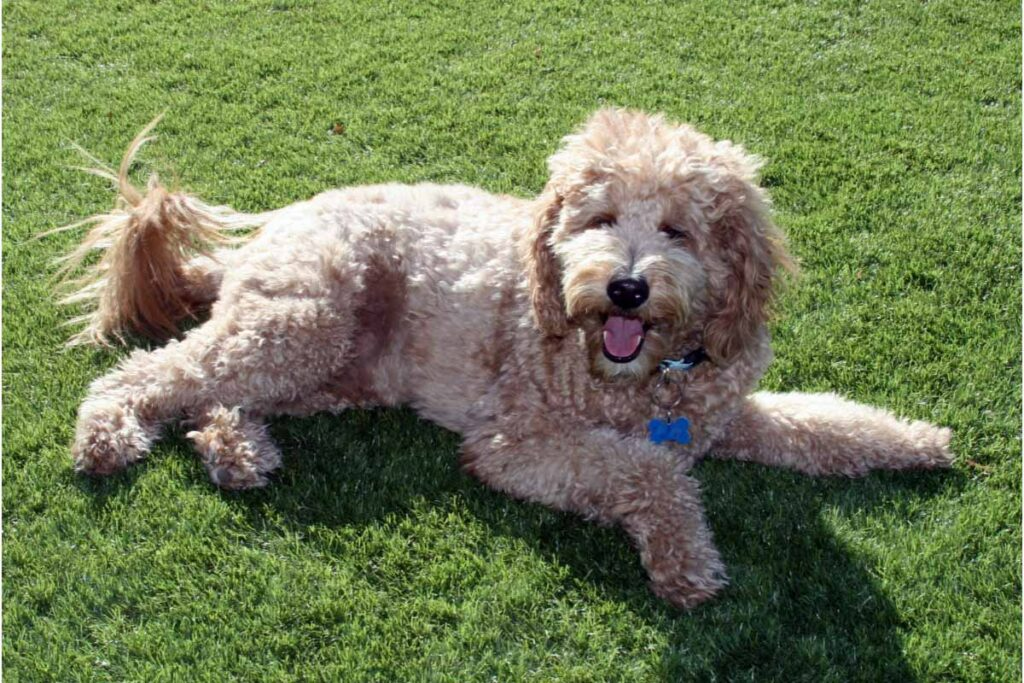A Goldendoodle, also known as a Groodle, is a designer dog. They are a Golden Retriever and Poodle mix. Goldendoodles and mini Goldendoodles are both mixed with a poodle and a golden retriever. However, a mini Goldendoodle can be combined with a miniature, toy, or small poodle.
Because they are so closely related, there are quite a few similarities between the two. They are different breed types, so there are slight differences between the two. So when it comes to mini Goldendoodle vs Goldendoodle how do you decide?
Whether you’re choosing between miniature Goldendoodles or regular Goldendoodles, these few differences might help dog lovers decide on which breed is the right fit for them. Read on to learn what separates these breeds.
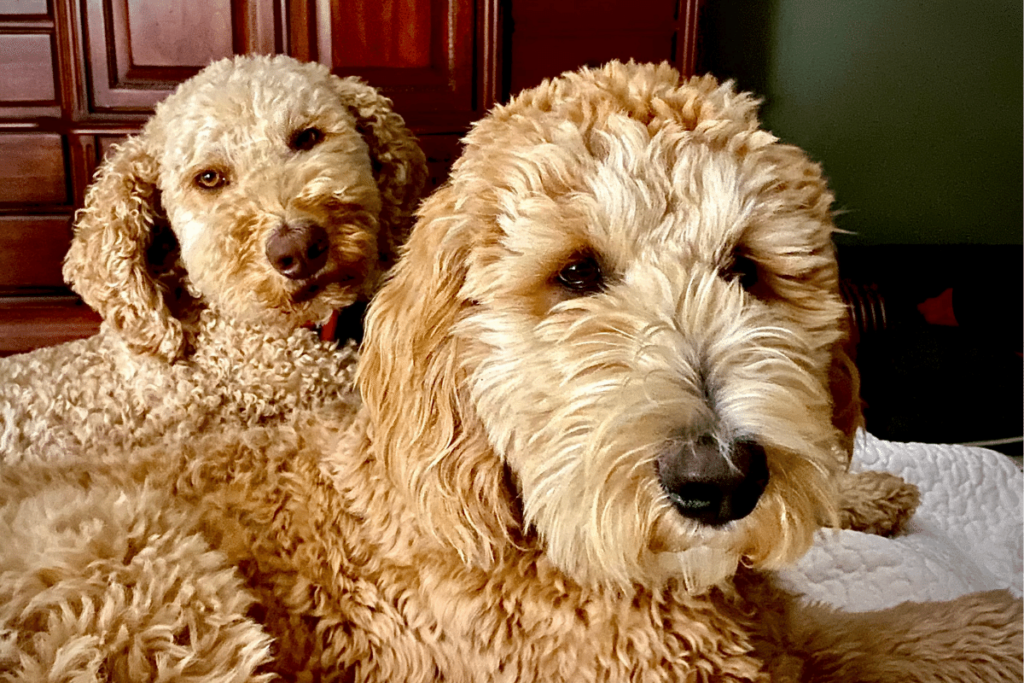
Contents
Mini Goldendoodle vs Goldendoodle: What’s the Same?
Mini Groodles and Groodles might have the same parent breeds mixes, but that’s not where the similarities end. Their temperament, intelligence, coats and so much more are the same too.
1. Temperament
Both Goldendoodles and mini Goldendoodles are friendly and sociable animals. They love being around people and are very patient with young children. They also get along well with other dogs and make playmates very quickly. They are both a good choice for families. However, both are prone to separation anxiety during the socialization process.

Unfortunately, their hyper-friendliness makes them unsuitable watchdogs. They’re more likely to befriend intruders than ward them away.
Another reason they don’t do well as watchdogs is because they don’t enjoy sleeping outside. These adorable dogs love hugs and social interaction.
2. Intelligence
Goldendoodles, whether mini or standard, are very intelligent. Remember, these pups are part Poodle, which is one of the smartest small dog breeds. They are also very dutiful and obedient, which means that Groodles pick up commands and tricks easily.
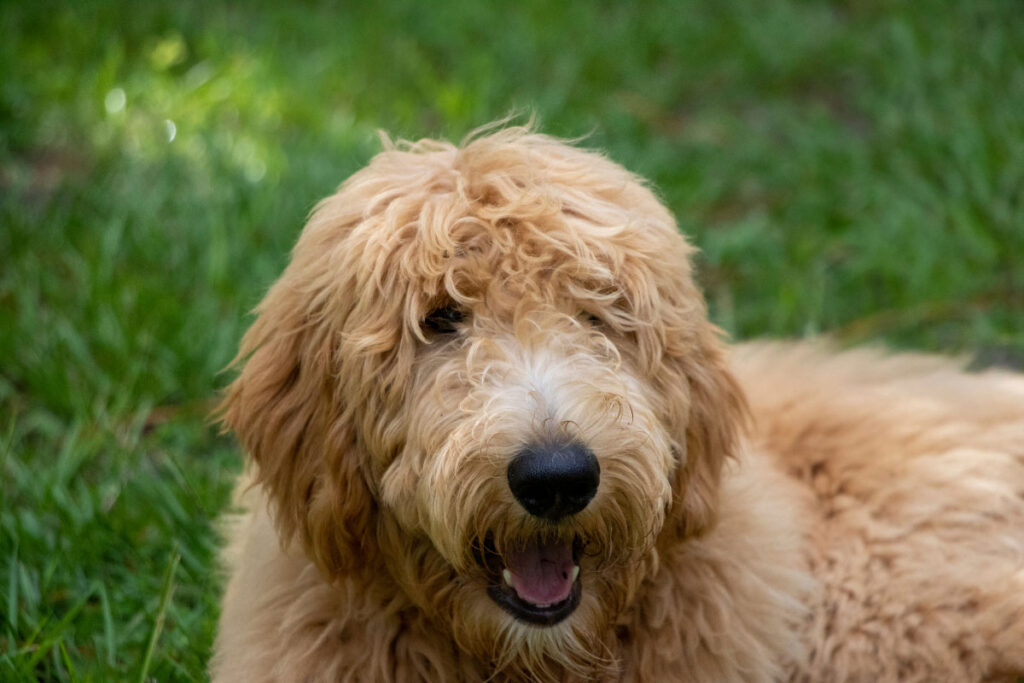
Their high intelligence also means they need constant stimulation and regular exercise to keep their brains and bodies healthy. To stimulate these intelligent dogs, you can teach them tricks or buy toys like this interactive puzzle game toy.
3. Coats
Both Goldendoodles and mini Goldendoodles have hypoallergenic coats due to one of their breed parents being a Poodle. Depending on your dog’s hair length, their coats will need regular cuts and regular brushing.
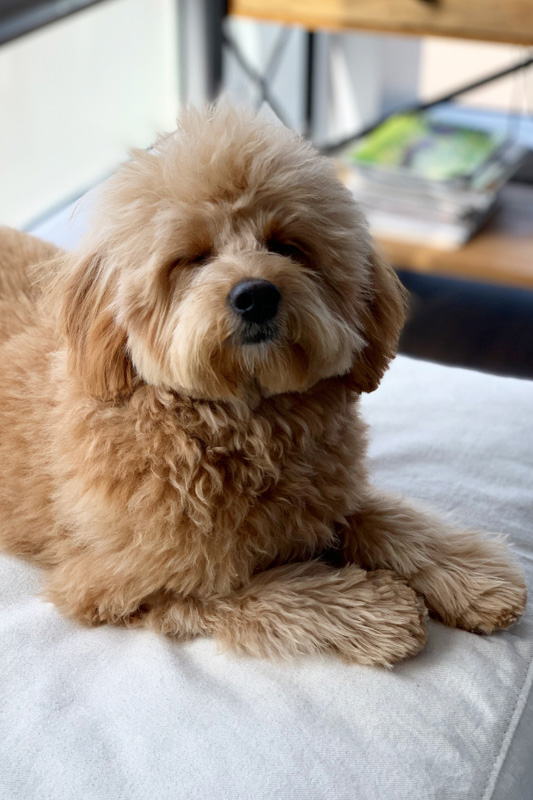
Longer-length coats need to be cut every six to eight weeks. Shorter-length coats don’t need to be groomed as often and can be trimmed every eight to ten weeks.
Goldendoodles have double coats, which means they have two layers of hair on their body. The undercoat has short hairs that have a wool-like texture. The top layer has longer hairs called guard hairs.
This isn’t special to Goldendoodles. Dogs like Golden Retrievers and Shih Tzu Pomeranians also have double coats. The double coat helps with temperature control and to repel moisture and dirt.

4. Maintenance
These designer dogs should not bathe more than once a month. Washing them any more than that can cause skin irritation.
If your dog continuously smells stinky in between baths, it might be a sign of a possible yeast infection or Malassezia Dermatitis. Additional yeast infection symptoms include redness, oily skin, hair loss, and sores across the skin.
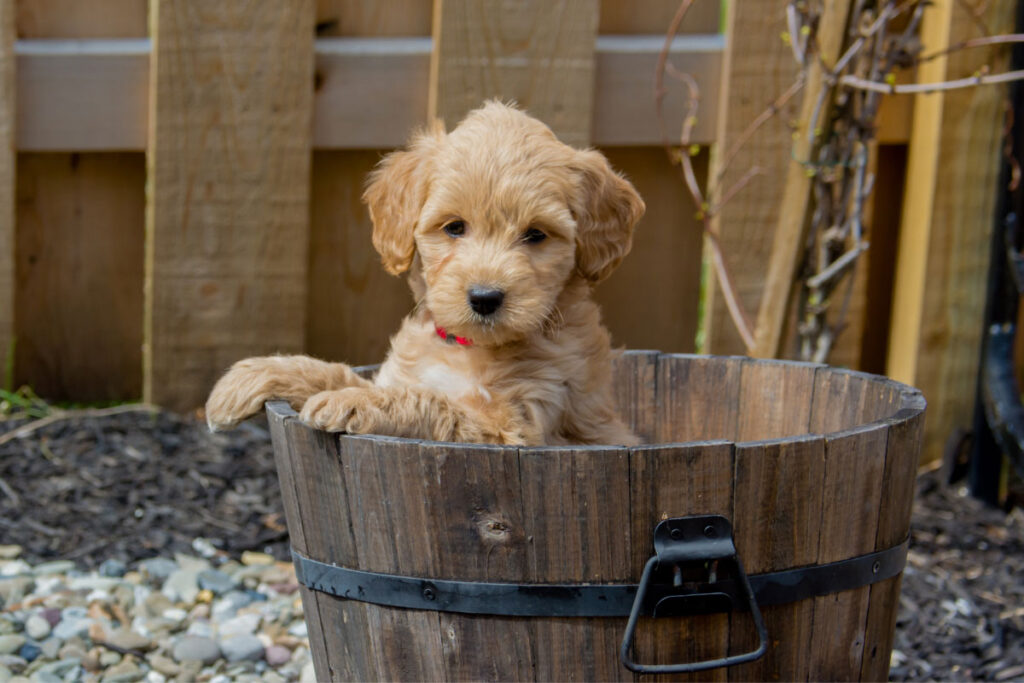
5. Health Problems
Both Goldendoodle dog types are prone to a few health issues. These diseases include hip dysplasia and Von Willebrand disease. Both conditions are hereditary, and there is no cure once it shows up, it can only be managed. This is why it is vital to maintain a good diet and exercise regime for your furry friend.
Hip dysplasia can be spotted as early as when your pup is only a few months old. It is hereditary and unfortunately has no cure. This condition happens when the hip bone and joint don’t grow at the same rate and causes pain in your pup’s hip. If hip dysplasia remains unmanaged, dogs can develop arthritis in their old age.
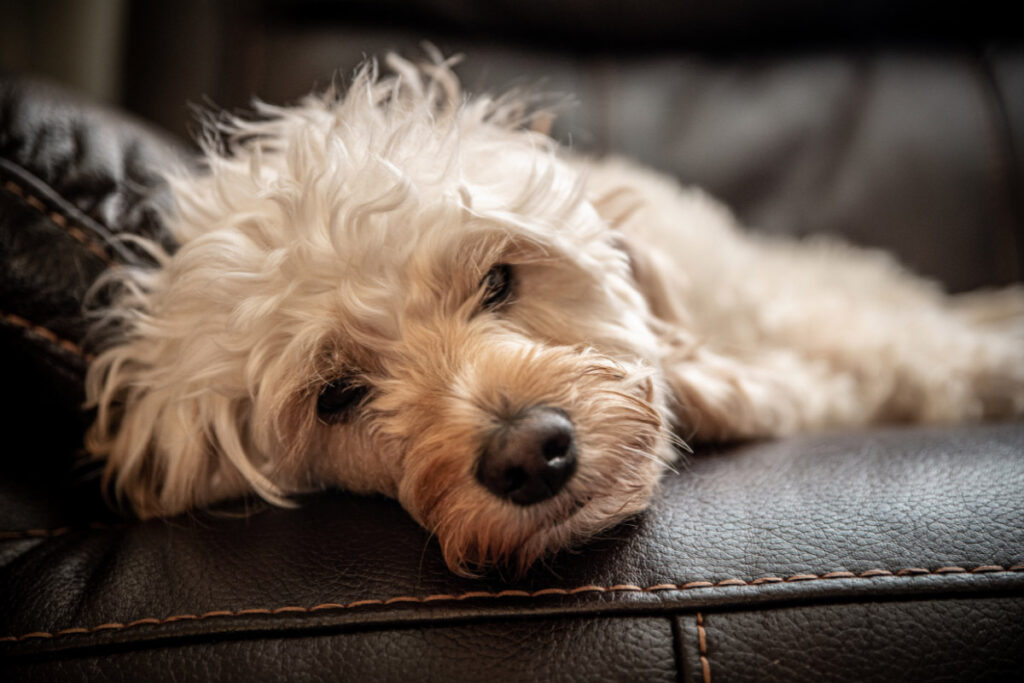
Von Willebrand disease is an incurable and lifelong bleeding disorder that affects both humans and dogs. The disease causes problems wherein blood doesn’t clot easily.
This can cause prolonged bleeding after an injury or bruising. It can also cause bleeding from the gums or nose and bloody urine.
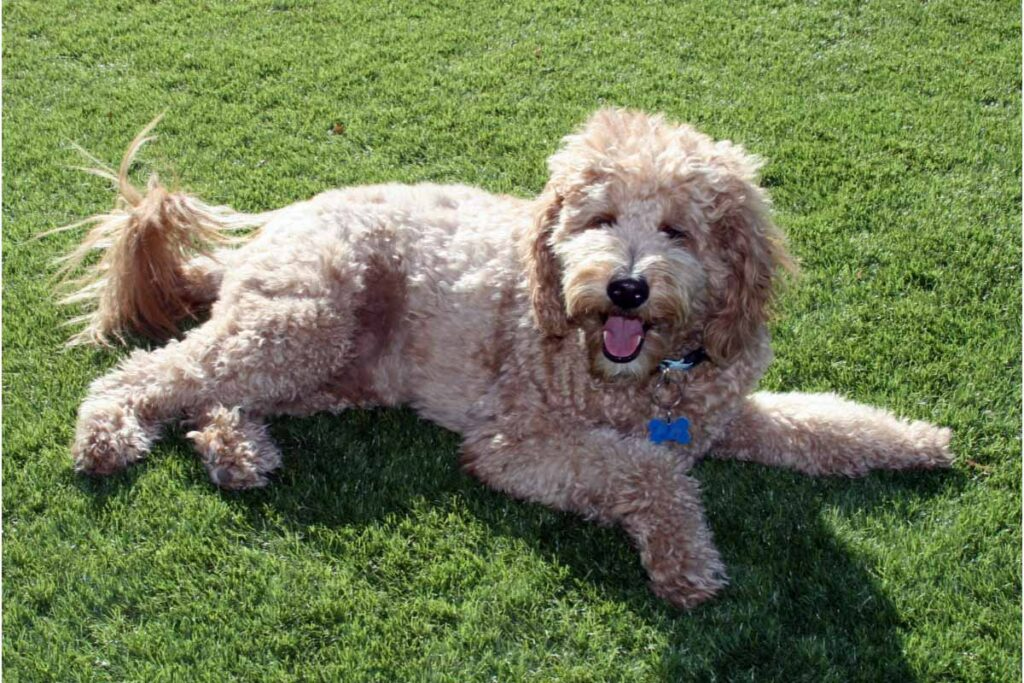
How are they Different?
Now that you know the similarities, it’s time to learn about the breed type’s differences like size, appearance and energy levels.
Standard Goldendoodle
A standard Goldendoodle is a mix between a Standard Poodle and a Golden Retriever.
1. Size
A medium Goldendoodle weighs between 40 to 50 pounds. While they don’t get as tall as a golden retriever or standard poodle, they can still be quite big. This larger dog can grow up to be between 17 to 20 inches tall.

While Standard Groodles can live in an apartment, this larger size dog still needs ample space to play and exercise outside. A cooped-up Goldendoodle can develop destructive behavior due to the amount of pent-up energy they have.
2. Appearance
The appearance of your dog depends on the kind of Poodle and Golden Retriever mix. In general, Standard Goldendoodles have long hair with dense coats. Their coats are mostly curly.

Their eyes are either blue or brown with either a black or brown button nose. Their coats can be an array of colors which includes brown, red, cream, and silver. Black Goldendoodles are the rarest coat color.
3. Grooming
For Standard Goldendoodles, a double coat means it traps dirt. Unfortunately, this also means that their curly manes are more prone to matting. You should brush their manes no less than once a week to prevent matting and tangling.
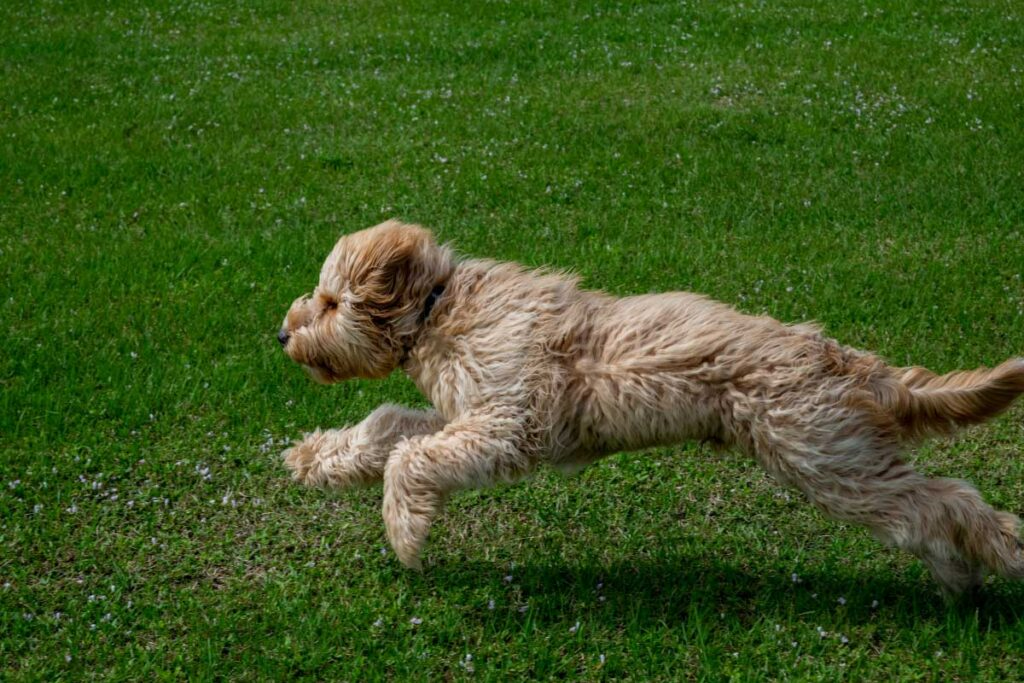
Make sure to keep their coats cut around the eyes, ears, and feet to avoid infection or irritation. Goldendoodles have floppy ears that should be monitored for infections, especially if they play in the water a lot.
4. Health
The average lifespan of a Goldendoodle is 11 to 14 years. They can live a long and healthy life depending on their diet and exercise regime. They’re also required to go for regular blood tests, eye tests, and X-rays.

There are a few health issues to be aware of in this breed specifically. Besides hip dysplasia and Von Willebrand’s disease, Goldendoodles are also prone to elbow dysplasia and Patellar Luxation.
This happens when the elbow or kneecap moves out of its original position. A tell-tale sign is if a dog is limping or skipping and then suddenly walks back on all four legs again.
5. Activity
Standard Groodles are highly energetic and need high stimulation both physically and mentally. They need about an hour’s worth of walks or exercise a day.
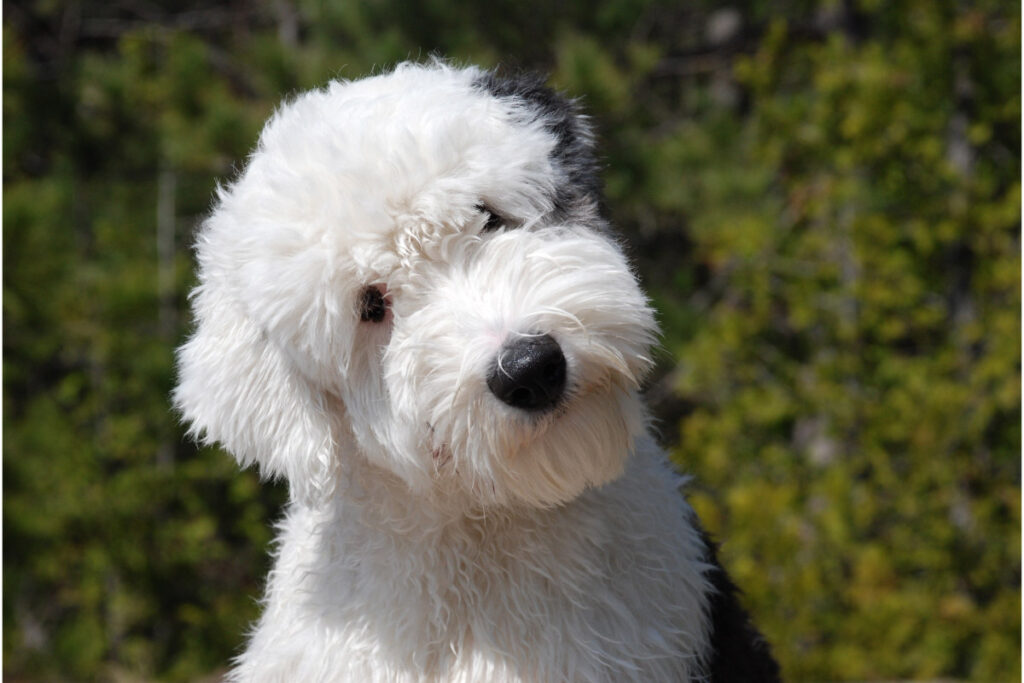
They are best suited for active families who enjoy hiking or playing outside. They would also do well in a big backyard where they could run and burn some energy.
They enjoy mental stimulation, through agility tasks and courses and especially love playing in the water. They pick up tricks quite easily and enjoy the challenge of learning new ones.
Mini Goldendoodle
A mini Groodle or toy goldendoodle makes a good companion if you want a smaller size pup that you can easily carry with you.
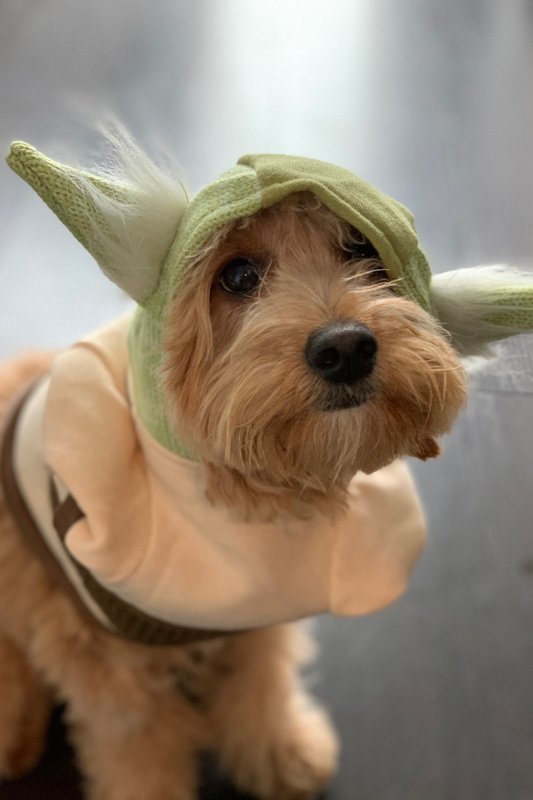
1. Size
A Mini Goldendoodle weighs between 15 to 35 pounds. They grow a bit taller than a mini poodle, which stands between 11 to 15 inches tall. A mini Goldendoodle can grow to be between 13 to 20 inches tall.
Mini Groodles are ideal for dog owners who live in small apartments and don’t have as much outdoor space. They don’t need that much exercise because they don’t have as much energy as their bigger cousins.
That doesn’t mean this toy poodle doesn’t need any exercise at all. This miniature poodle still needs plenty of walks and stimulating toys to keep dogs busy.
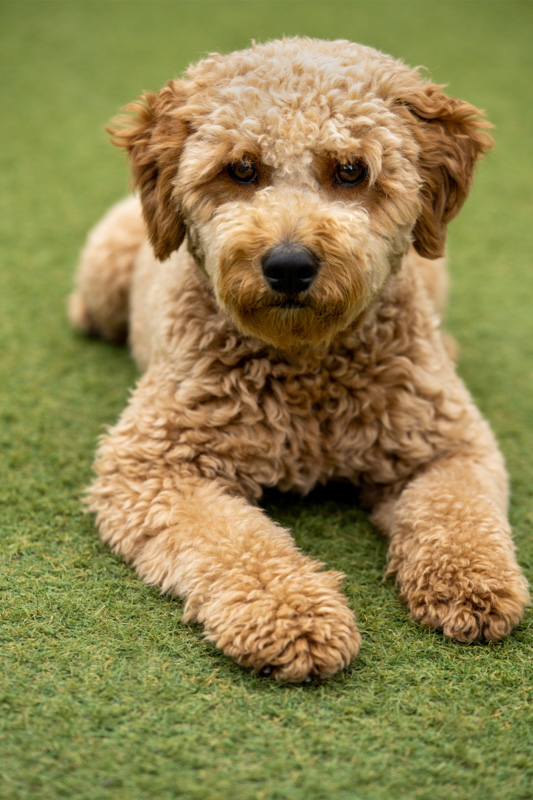
2. Appearance
Mini Goldendoodles are very fluffy when they’re puppies. As they grow, so do their curl densities, and they go from tight curls to bigger curls and waves. Miniature Groodles have medium-length hair with dense coats.
Their eyes are brown or amber, and they rarely have any other color nose besides black. Their coats can be black, brown, grey, red, or variations of blonde.
3. Grooming
Mini Goldendoodles also have double coats but generally need to be brushed more frequently than Standard Groodles. Miniature Groodles’ hair should get a brush at least two to three times a week to get rid of any tangles and knots. This mini dog breed’s fur also mattes faster than the standard breed’s fur. However, they do have a low-shedding coat.

Mini Groodles are more prone to eye infections than Standard Groodles, so make sure to check their eyes regularly. They might have some discharge in them, but it’s usually nothing to worry about.
Just remove it gently with a pet eye wipe or an eye comb. If the discharge is an alarming color like green or yellow, they have to be taken to a professional.
4. Health
The life expectancy of a miniature Goldendoodle is between 12 and 16 years. Mini Groodles don’t need that much exercise as Standard Groodles. Their diet is more important because they have a faster metabolism than a Standard Groodle. Food for smaller dog breeds also requires more calories than bigger dogs to stay full.
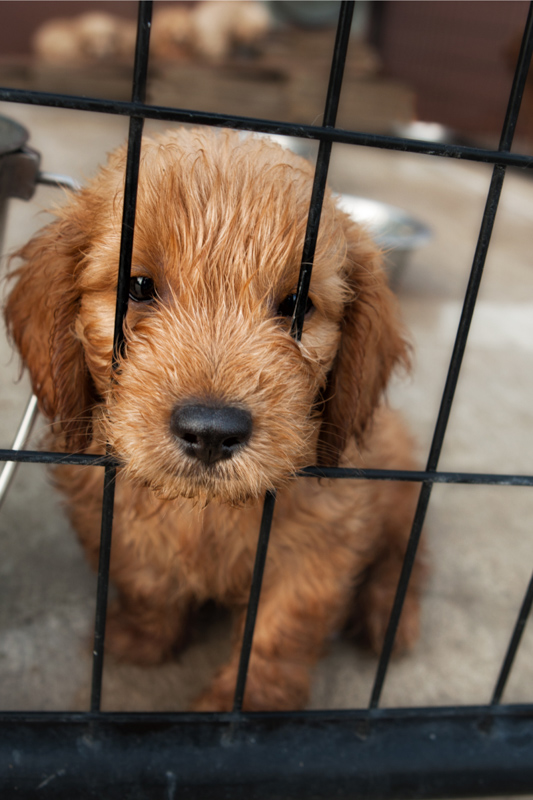
Eyesight can be an issue as Mini Groodles are prone to eye diseases like Progressive Retinal Atrophy (PRA) and cataracts. Both can cause partial or total vision loss.
While this may seem inconsequential to some, Mini Groodles are prone to bloating. In humans, bloating is usually not that serious and can be fixed with a simple burp. With dogs, it’s not that trivial. It can transform into a complex medical and surgical emergency.
5. Activity
These smaller dogs need far less exercise than a standard Groodle, which is why they’re perfect for apartment living. They need about one hour of exercise per day that can be split every few hours. Their energy levels are moderate, compared to their super energetic bigger cousins.
They can burn quite a bit of energy playing with kids or their owners. They enjoy learning new tricks as this stimulates their brains too.

Which Dog is Right for You?
Now that you’ve seen the similarities and differences between a standard Groodle and a miniature Groodle, you can make an informed decision. Looking at the Goldendoodle’s good and bad traits, you can start to decide on which breed type is right for you and your family.
Both breed types are friendly and love being around both kids and adults. They make friends easily and are intelligent canines. However, intelligence and friendliness make them balls of energy that cannot be away from a companion for too long.
The good thing is whether you’re family-oriented or live alone, regardless of the breed type, a Goldendoodle makes a fantastic companion that will (almost) never leave your side. At the end of the day, it mostly comes down to personal preference.
NB: Do make sure you only work with reputable breeders when looking for your Goldendoodle puppy. Check out this article from the American Kennel Club in the United States for guidance.
